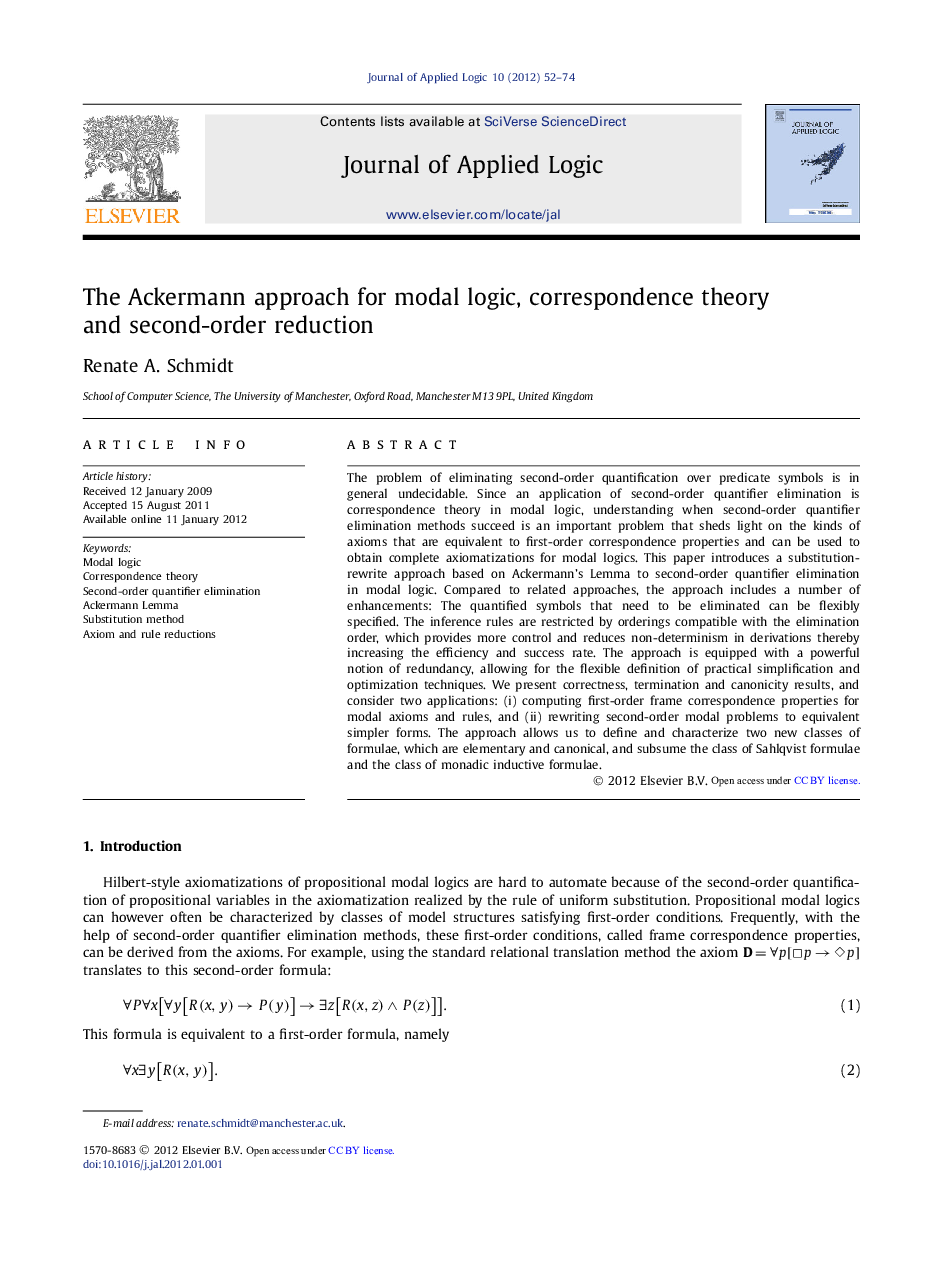| کد مقاله | کد نشریه | سال انتشار | مقاله انگلیسی | نسخه تمام متن |
|---|---|---|---|---|
| 6424889 | 1345217 | 2012 | 23 صفحه PDF | دانلود رایگان |

The problem of eliminating second-order quantification over predicate symbols is in general undecidable. Since an application of second-order quantifier elimination is correspondence theory in modal logic, understanding when second-order quantifier elimination methods succeed is an important problem that sheds light on the kinds of axioms that are equivalent to first-order correspondence properties and can be used to obtain complete axiomatizations for modal logics. This paper introduces a substitution-rewrite approach based on Ackermannʼs Lemma to second-order quantifier elimination in modal logic. Compared to related approaches, the approach includes a number of enhancements: The quantified symbols that need to be eliminated can be flexibly specified. The inference rules are restricted by orderings compatible with the elimination order, which provides more control and reduces non-determinism in derivations thereby increasing the efficiency and success rate. The approach is equipped with a powerful notion of redundancy, allowing for the flexible definition of practical simplification and optimization techniques. We present correctness, termination and canonicity results, and consider two applications: (i) computing first-order frame correspondence properties for modal axioms and rules, and (ii) rewriting second-order modal problems to equivalent simpler forms. The approach allows us to define and characterize two new classes of formulae, which are elementary and canonical, and subsume the class of Sahlqvist formulae and the class of monadic inductive formulae.
Journal: Journal of Applied Logic - Volume 10, Issue 1, March 2012, Pages 52-74